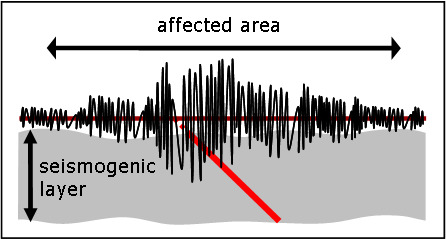Understanding Active-Fault Hazards
There are three well-defined, different processes associated with the activity of a seismogenic fault:
Ground Shaking
- ground shaking;
- surface deformation;
- surface rupture.
Ground Shaking
- always occurs but is transient;
- affects the widest area;
- is responsible for most of the damage;
- may trigger other geological effects (liquefaction, landslides, secondary ruptures);
- requires mapping at 1:200k-1M.
Surface Deformation
- always occurs and is permanent;
- affects a wide area (fault size x2);
- produce limited damage (critical facilities);
- may trigger other geological effects (stream avulsions, slope instabilities, secondary ruptures, and especially tsunami);
- requires mapping at 1:200k-1M.
Surface Rupture
- occurs when faults "daylight" and is permanent;
- affects a limited area (smaller than fault length);
- may produce significant damage;
- may trigger other geological effects (water ponding, damming);
- requires mapping at 1:1k-10k.
References
Bird J.F. and Bommer J.J. (2004), Earthquake losses due to ground failure, Engineering Geology, 75(2), 147-179, https://doi.org/10.1016/j.enggeo.2004.05.006
Bird J.F. and Bommer J.J. (2004), Earthquake losses due to ground failure, Engineering Geology, 75(2), 147-179, https://doi.org/10.1016/j.enggeo.2004.05.006








